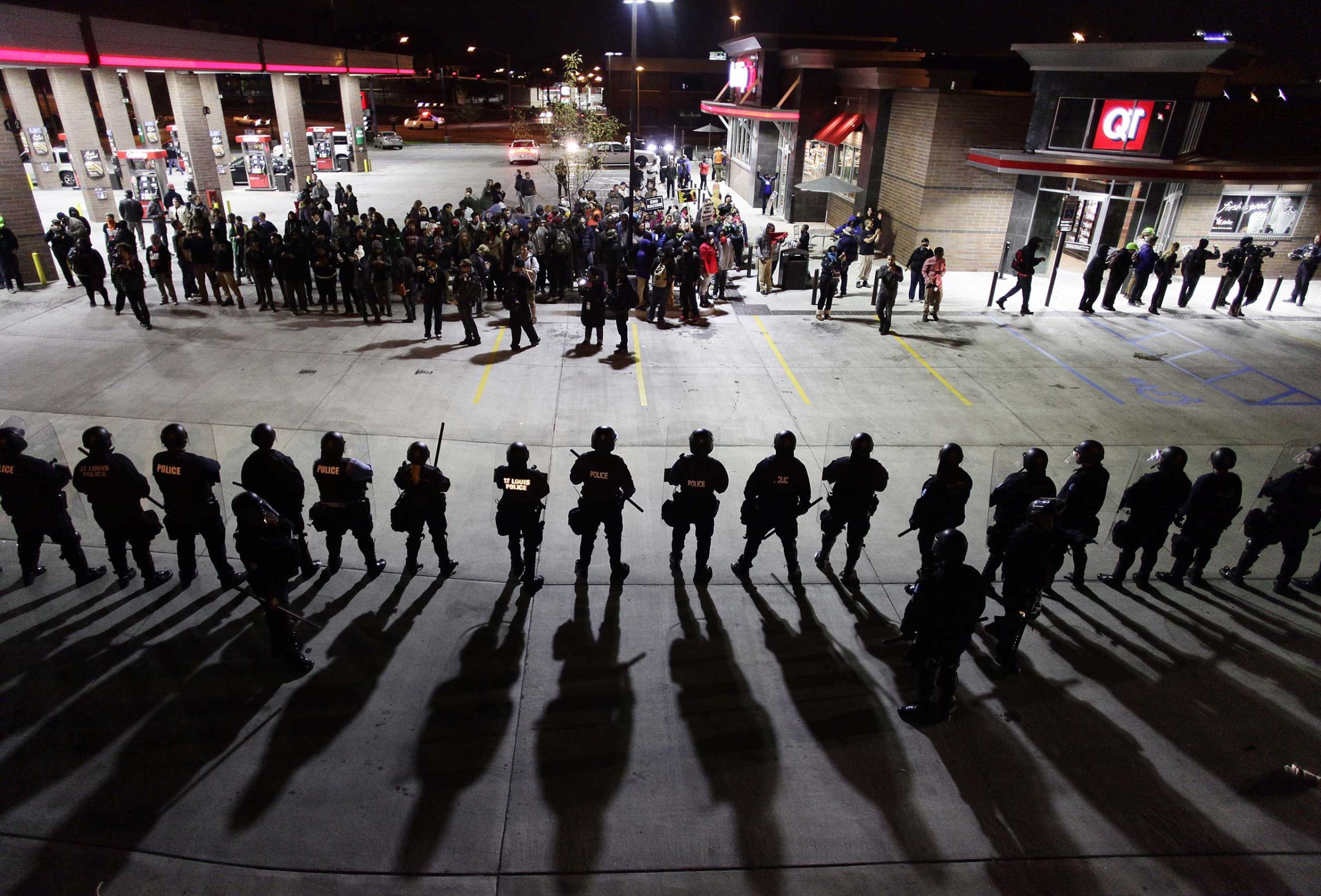
Correction appended Oct. 24, 1:25 p.m. ET
Amnesty International made headlines in August when the international human rights organization dispatched a team of observers and advocates to document the unrest in Ferguson, Mo. that followed the fatal police shooting of Michael Brown, the first time a delegation of its kind had investigated human rights abuses in the United States.
The resulting report was released Friday. It doesn’t shine any light on the altercation between Brown and police officer Darren Wilson or what led Wilson to kill the unarmed teenager. But there’s value in reading about the events in Ferguson through the lens of human rights. Here are three key claims made in the Amnesty report:
1) Lethal force was not justified
The report acknowledges that there are conflicting accounts of the physical altercation between Brown and Wilson, but says that none of them rise to the level that would have justified lethal force. “International standards provide that law enforcement officers should only use force as a last resort…Irrespective of whether there was some kind of physical confrontation between Michael Brown and the police officer, Michael Brown was unarmed and thus unlikely to have presented a serious threat.” But several witnesses testified in front of a grand jury that Brown and Wilson did struggle over Wilson’s gun, the Washington Post reported Wednesday. If Brown had tried to take Wilson’s gun, as some evidence suggests, then Wilson may not have broken the law.
2) Ferguson police violated the human right to peaceful assembly
Amnesty notes that according to international law, the right of peaceful assembly is a basic human right. The report notes that law enforcement imposed several restrictions on this right, including a curfew and the “keep walking” rule, which was imposed on Aug. 18 to deter groups from massing. The report says that in the 12 days after Michael Brown’s death, 132 people were arrested for “failing to disperse.” The Amnesty delegation also condemned the use of tear gas and rubber bullets to break up protests, and the threats made against journalists and legal observers. But the protests in Ferguson weren’t always peaceful– there were reports of protesters shooting at police cars, throwing bottles at police, and numerous other violent encounters.
3) There is not enough data on police shootings
The report calls for data on police shootings to be broken out by race, ethnicity and gender in order to give a complete picture of how many black men are killed by police per year. Amnesty also recommends that Congress pass the End Racial Profiling Act and the Stop Militarizing Law Enforcement Act.
You can read the full Executive Summary of the report here: Ferguson Report Executive Summary
The original version of this story misstated the nature of Amnesty International’s work in the United States. The group has researched human rights abuses in the United States previously. This August was the first time the organization sent a delegation of observers, advocates and trainers to document unrest anywhere in the United States.
More Must-Reads From TIME
- The 100 Most Influential People of 2024
- Coco Gauff Is Playing for Herself Now
- Scenes From Pro-Palestinian Encampments Across U.S. Universities
- 6 Compliments That Land Every Time
- If You're Dating Right Now , You're Brave: Column
- The AI That Could Heal a Divided Internet
- Fallout Is a Brilliant Model for the Future of Video Game Adaptations
- Want Weekly Recs on What to Watch, Read, and More? Sign Up for Worth Your Time
Write to Charlotte Alter at charlotte.alter@time.com